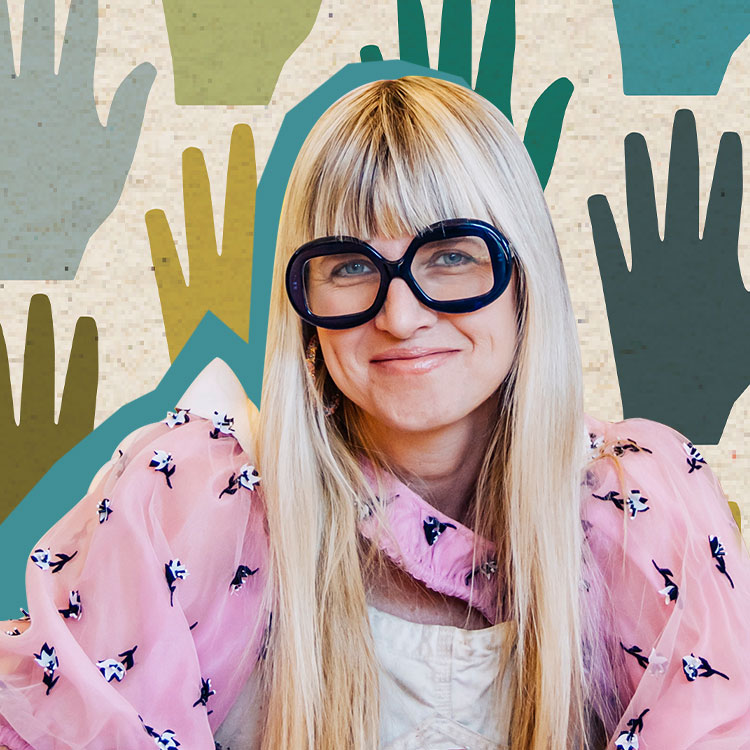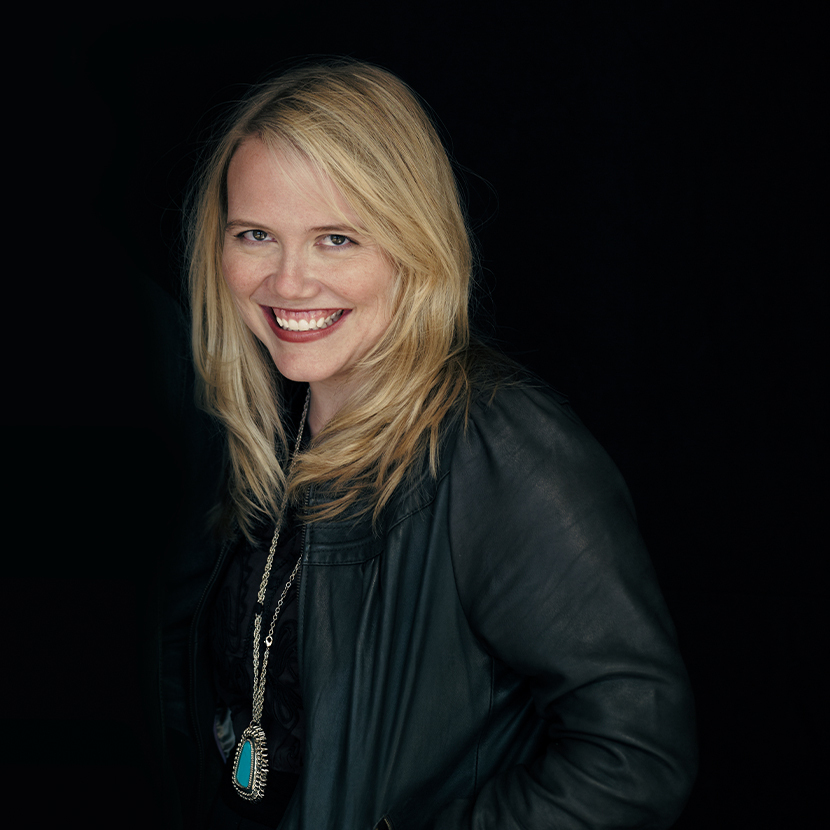Contemporary artist Elizabeth Chapin takes an anthropological approach to her painting and sculpture work, exploring themes of “nostalgia, privilege, tolerance, freedom, and discomfort” in colorful, multi-dimensional works in vibrant hues that spark awe and delight. Growing up in Mississippi in a traditional Southern culture with closely defined ideals of beauty, Chapin’s work, focused on young women as portrait subjects, aims to redefine what it means to be women. “My greatest hope for women is to be utterly themselves — free of both shame and duress,” she says. She paints portraits of people in all walks of life, genders, and ages, yet her approach is singular. The one word that captures how she paints someone’s portrait? With “empathy.”
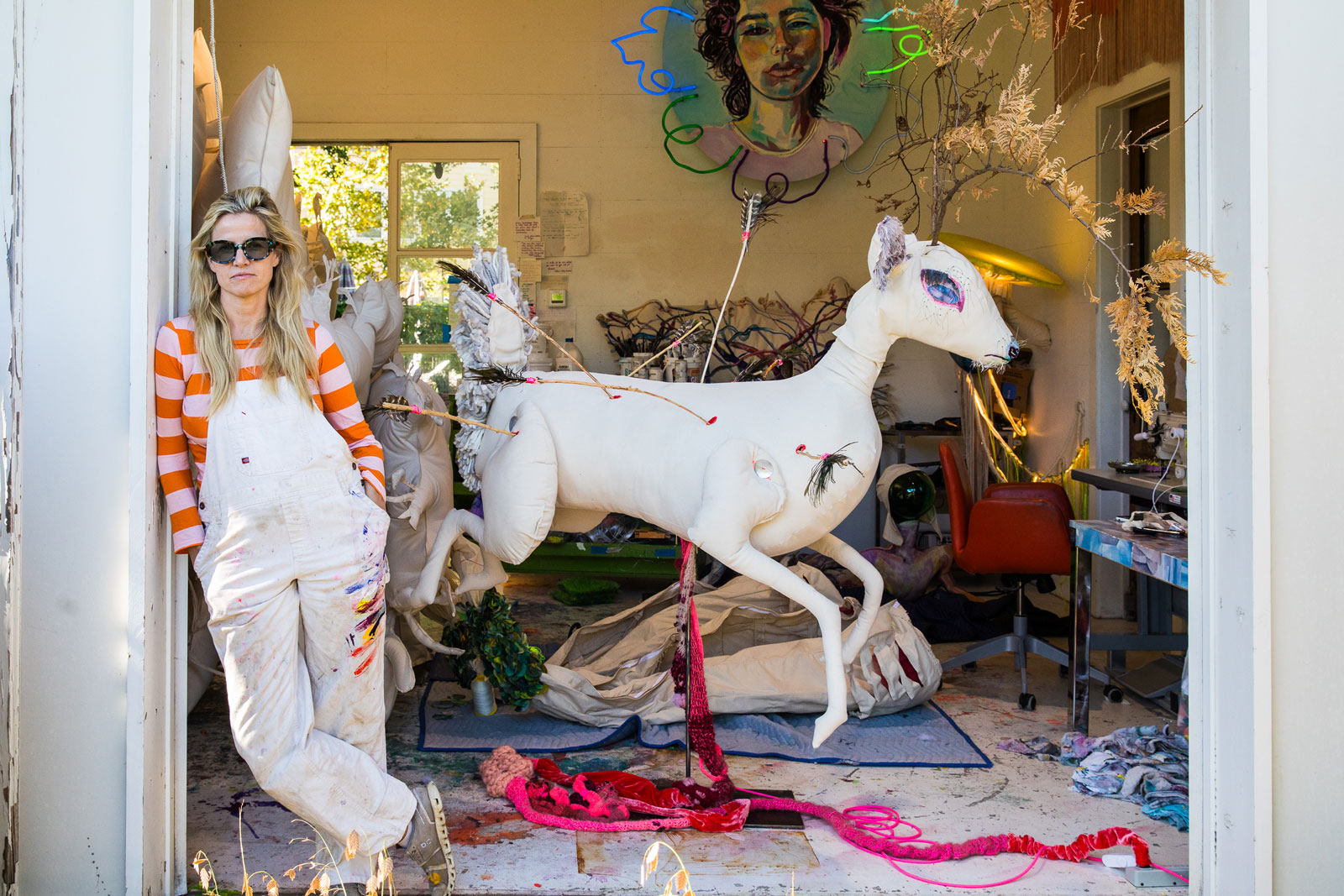
Do you ever wrestle with the vulnerability of putting your art out into the world and how do you work through that?
Every day. It feels like a dance of permission and humility, and I don’t always know the steps. Permission, in that I want to take up space; humility in that I want, as J.D. Salinger said, to have “the courage to be a nobody.” I want to be unruly and unbounded while maintaining intimacy and tenderness. I wrestle to grant myself permission daily, hourly, asking whether what I am making matters and whether anybody cares about it, while wanting to be free of what people think. Making is medicine for my addiction, my longing, my shadow. But I also need to listen to my shadow in order to occupy space honestly, and to see everyone else’s expression as inside this dance.
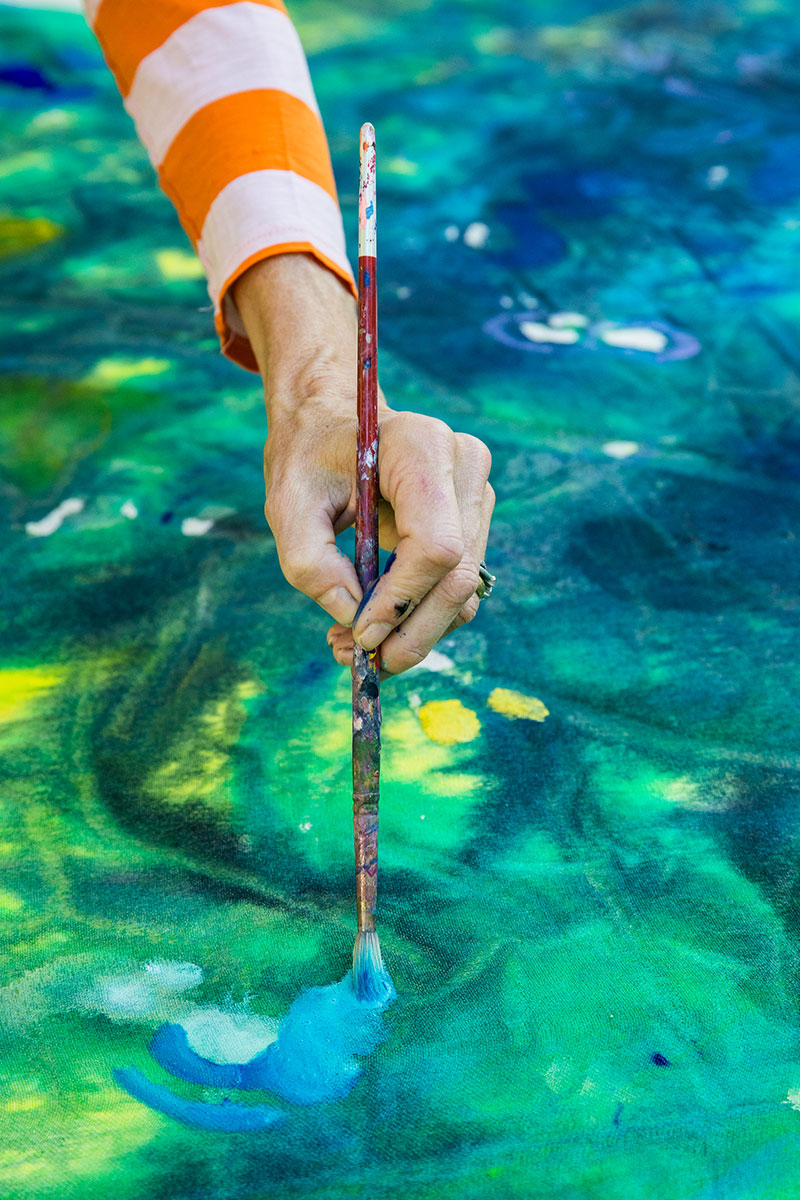
A palette that Elizabeth is working with for her forest-inspired show at Women & Their Work; photography by Wynn Myers.
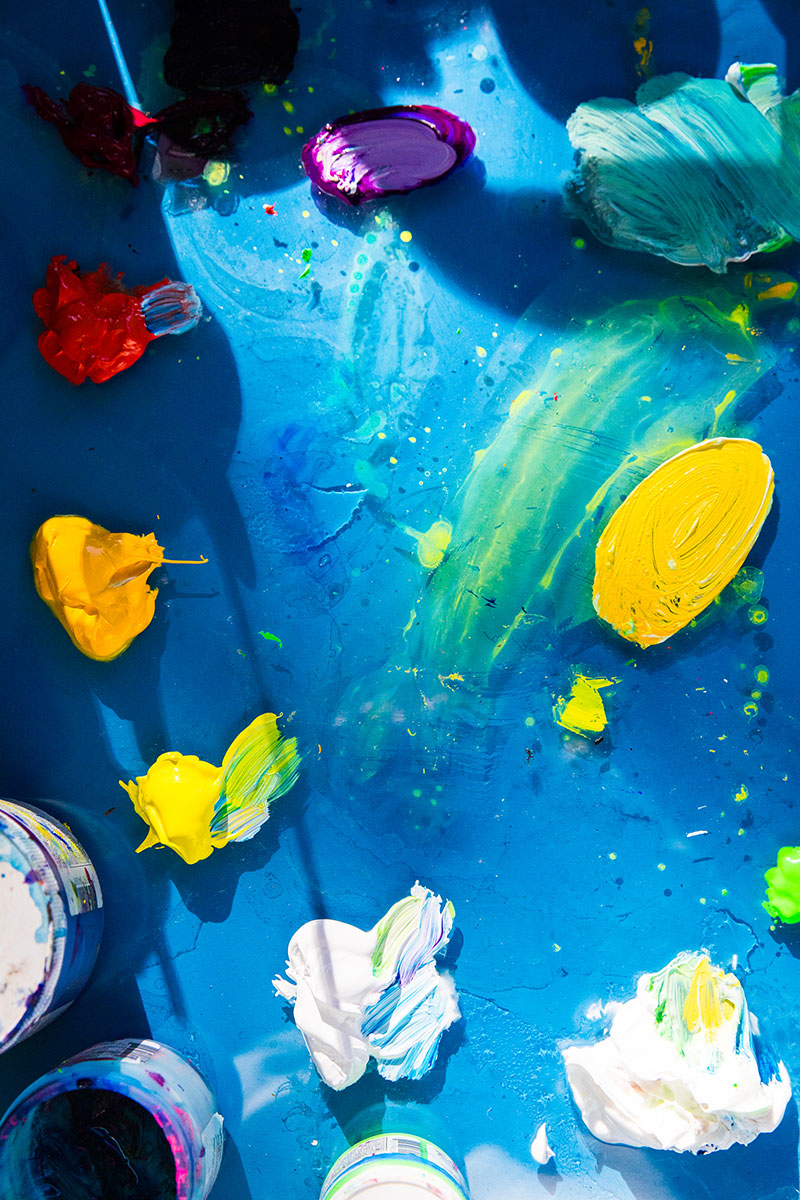
Elizabeth’s art studio is located in the backyard of her Victorian home. Pictured is a scene from the messy middle of her creative process; photography by Wynn Myers.
Growing up in Mississippi, what were some of your earliest creative influences?
My mother had my portrait painted when I was three by Mildred Wolfe. I remember sitting for her. And I remember wanting to be good for her (and for my mother). My great aunt Lurline Slaughter was a painter. She lived in Silver City, Mississippi, in the Delta, and painted huge somewhat abstracted florals. She was really the only person I knew as a child who modeled being a professional artist and a mother.
What I was granted as a woman in the South, was that painting and majoring in art was acceptable, even cute (there are pros and cons to this obviously). I actually think it would have been harder for my brothers to choose that and be supported by the family. But there was the expectation to go to a “regular” college for a “well rounded” education. And I put a lot of pressure on myself to be well rounded.
To be a good mother, to be a good person, which loops back to my little girl self sitting primly and still for my portrait to be painted. I think my large, unruly figures come from trying to bust out of this construct and to find my own goodness. And when I say my own goodness, I mean really the is-ness of everything.
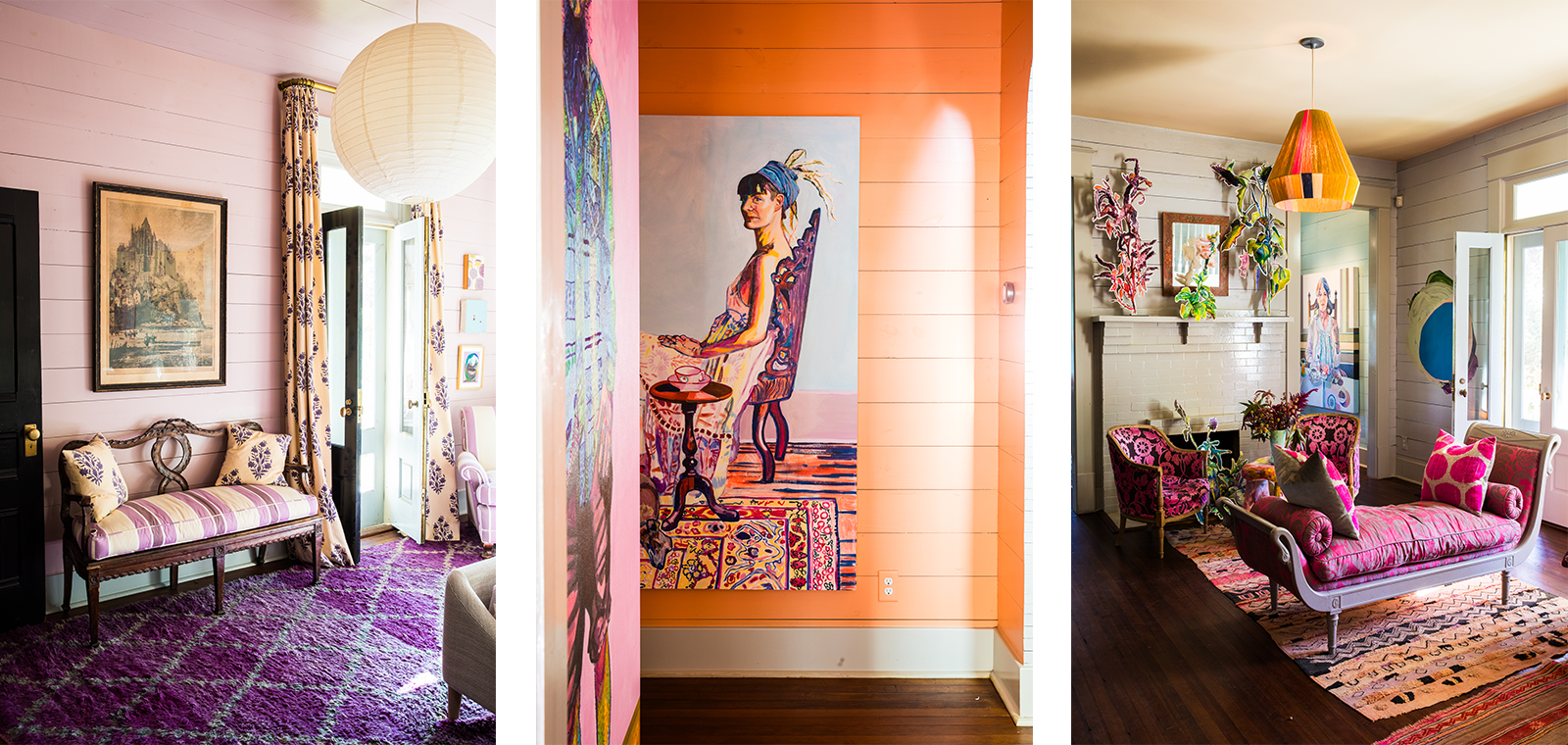
Your vibrantly colored home is a work of art in itself. What was it like to restore a 100-year-old Victorian house and how long did it take?
Thank you. I was pregnant with my daughter in New York City, and we came to Austin to look for a laundry room and some grass between our toes. I fell in love with this house as I was walking by. It was leaning, rotting, had large holes, a raccoon infestation, and had been turned into a boarding house during the Depression. But I could see her, and we moved into one of the four apartments. The other renters helped us pay the mortgage. And for 14 years, we saved our pennies, in what I called our wooden tent. Candles flickered in the breeze. We wore hats and gloves in the winter to watch a movie or have a dinner party. And I raised my children in what felt like a playground. A place that was so not precious that it was sacred.
When we were able to renovate, all that time of accepting the house as it was made it easy to know what I needed to do, or more importantly, what I did not need to do. To let every room just be a room. To not build things into it, as a way of honoring her life which extends before and after me. And to allow me to change my mind about how I live in a room day in and day out.
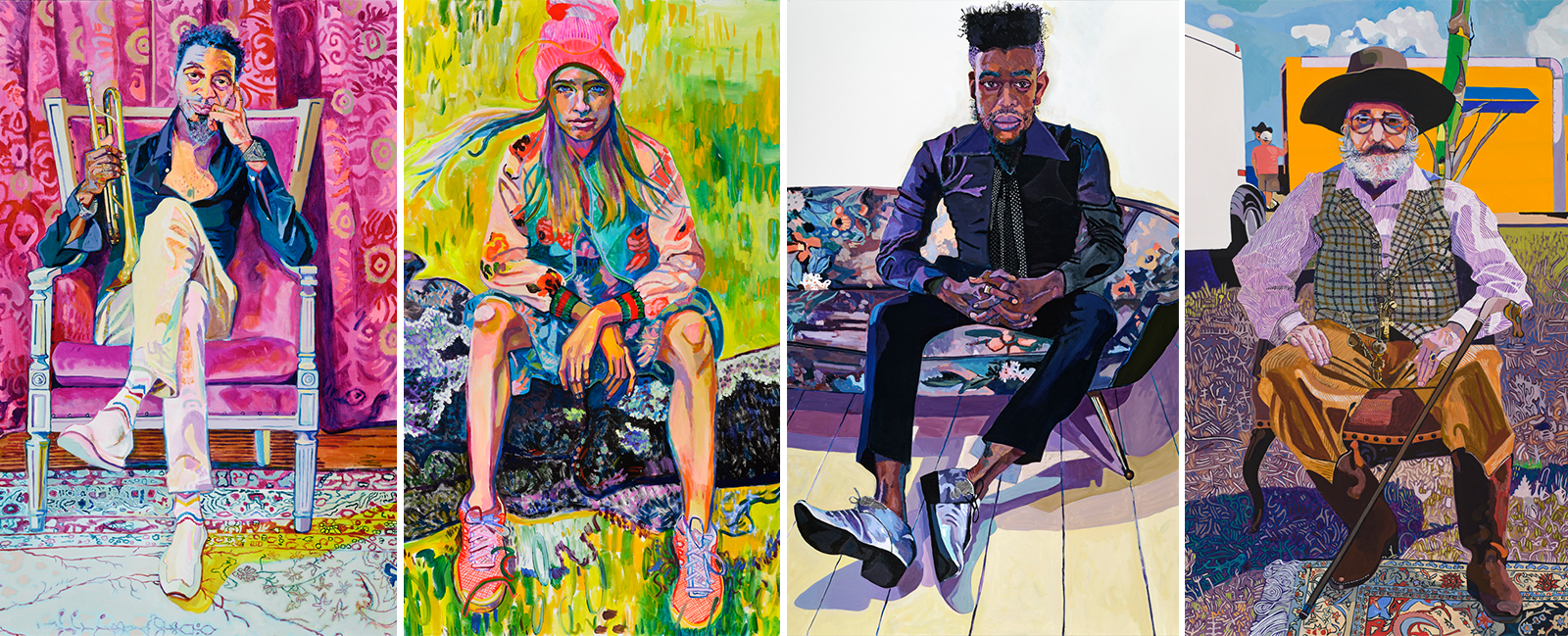
I think my large, unruly figures come from trying to bust out of this construct and to find my own goodness. And when I say my own goodness, I mean really the is-ness of everything.
What are some of your current projects that you are most excited about?
My work was recently in a sculpture biennial in Houston (in a rice silo). I am excited to be in Houston and to be considered a sculptor. Also, I am in the middle of being mentored by Shahzia Sikander. Her work has bewitched me for a long time. And to have her in the studio with me, taking her time to look at my work, to help me, to engage with me, is profoundly honoring. She is so generous and kind. I have been preparing (for three years) for a solo show at Women & Their Work (in Austin) that opened in January of this year.
I am creating a painted and then projected forest of Artemis. It has been a long and deep engagement with the trees and people around me. I am interested in how the painter and painted co-become? How gaze is irrelevant in the light of entanglement, how to take seriously but also play with the idea of paintings being ghosts of enfleshed experience and even of themselves, an echo of our collective ghost presence in the digital realm. And how the act of painting can transubstantiate longing into reunion.
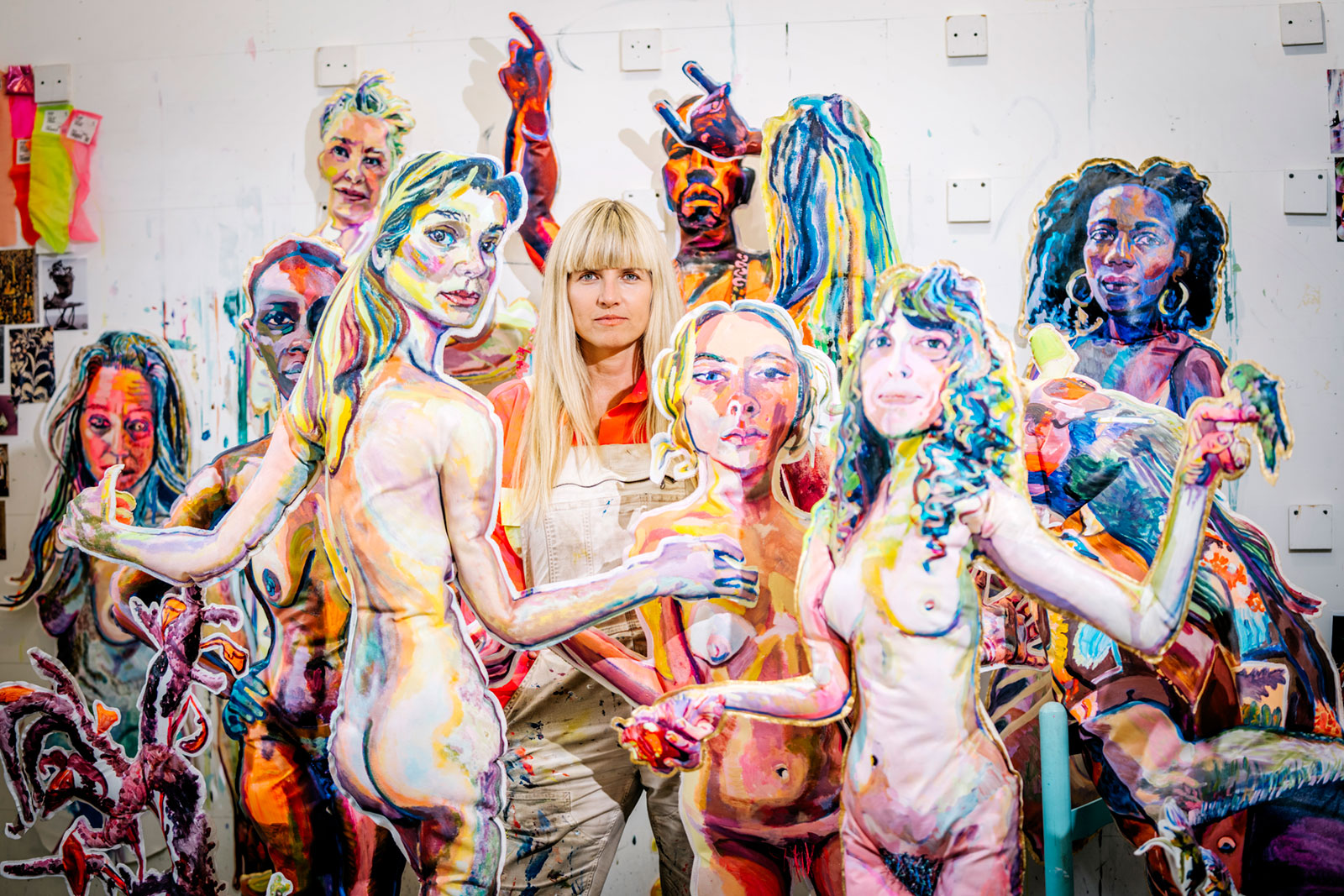
As a student (and teacher) of the Enneagram, what have you connected with most about the teaching? And, of course, can we ask your type?
I am a Type Four on the Enneagram. My mother introduced me to the Enneagram when I was 18. Reading Don Richard Riso and Russ Hudson’s description of my type was like the strange relief of diagnosis. But I didn’t really fully get into it until I heard Suzanne Stabile tell her relational stories about it. Her stories were something I could wear into my life. She asked me to be an apprentice for three years, and I have been a student ever since.
It took me many years (again to feel permission) to teach and to start a podcast. The thing that helps me the most is ‘stance work’ — developing your least dominant energy, which as a Four is ‘doing.’ Knowing that when my feelings (longing, envy, shame) are consuming me, that doing the next small, practical action puts not only a boundary around my feelings, but actually heals them. Action alchemizes feelings.
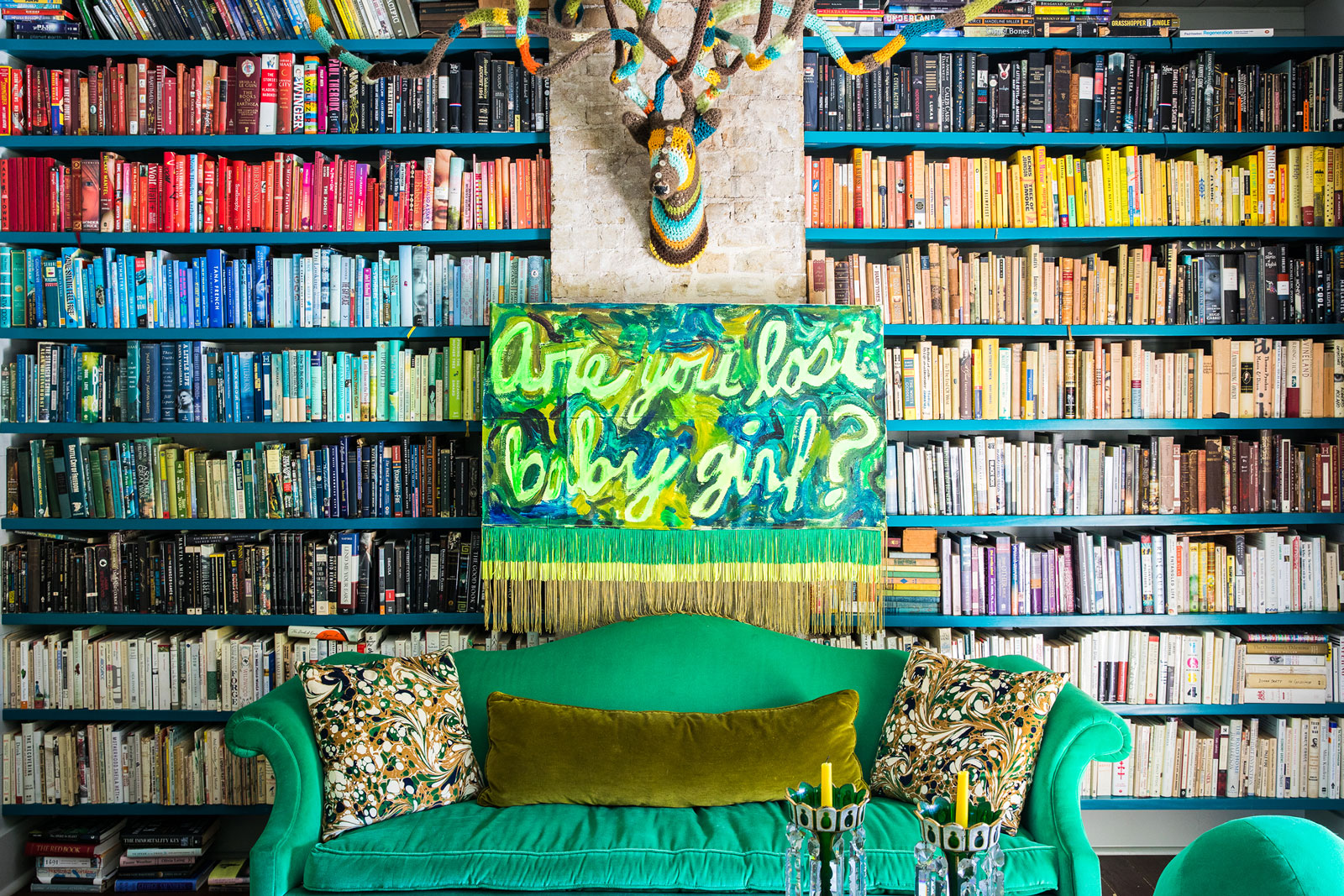
I want to be unruly and unbounded while maintaining intimacy and tenderness. I wrestle to grant myself permission daily, hourly, asking whether what I am making matters and whether anybody cares about it, while wanting to be free of what people think.
